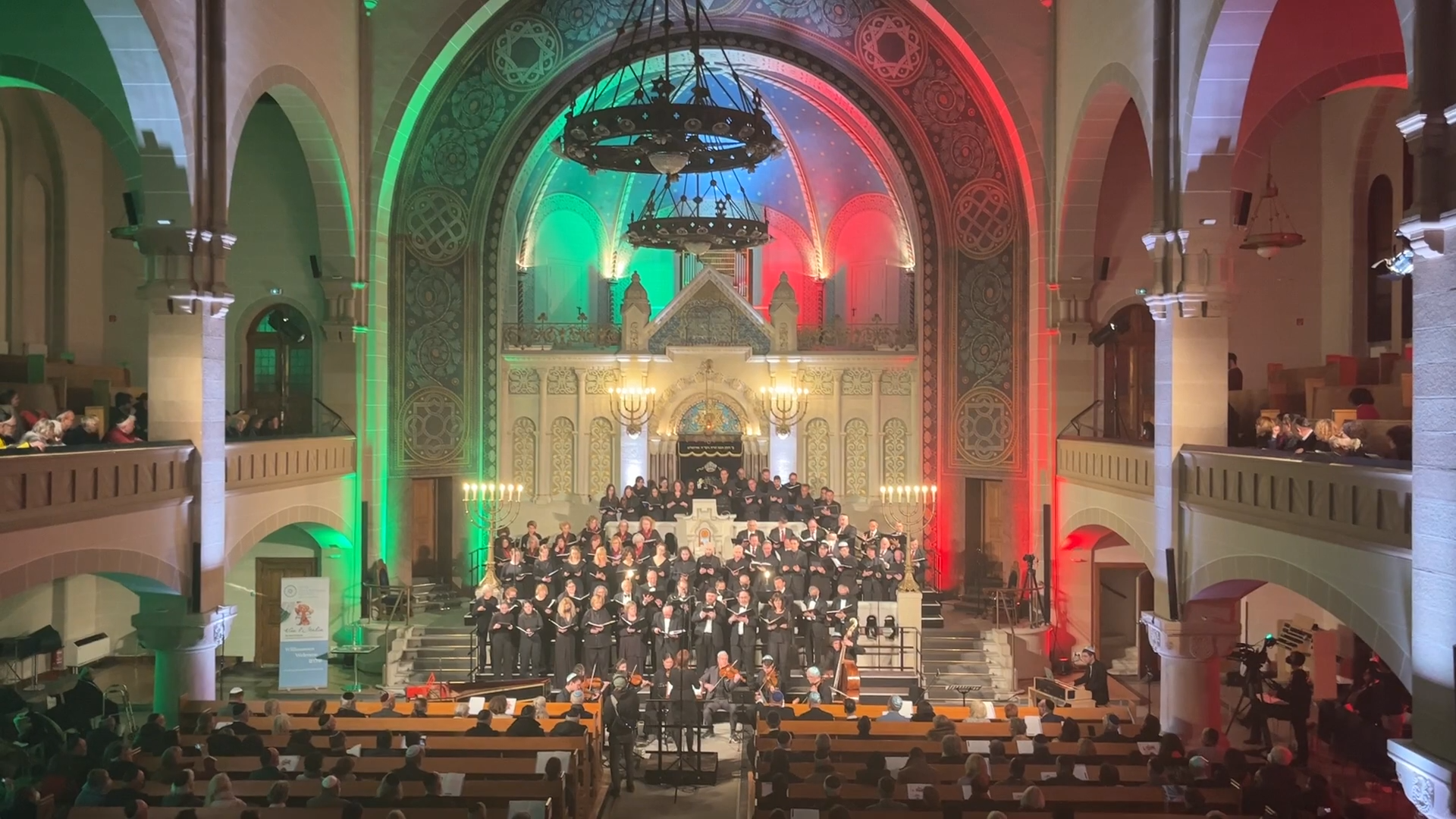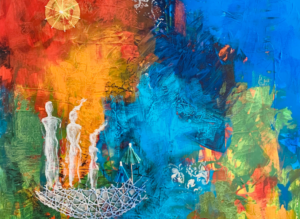Hebrew Choral Music from 19th-century Italy Comes to Life in Berlin
Italian Jewish choral music blends opera influence with synagogue tradition
Published Apr 26, 2023

This is music from a bygone era: the multicultural Jewish life of 19th-century Italy. The composer was Ezechiello Levi, born in Vercelli, in the Piedmont region of the Italian Northwest. The region, famous today for its wines and cheeses, once hosted 12 distinct Jewish ghettos (Jewish quarters in Italian urban centers).
Here, Jewish populations originated from Italy itself, but also from Ashkenaz (Germany and France), Sepharad (Spain and Portugal), and Provence (the South of France), each bearing distinct customs and traditions, and at the same time sharing in the project of Italy’s unification (often referred to as Risorgimento) and of Jewish Emancipation.
At the time, Vercelli was an important Jewish center with a monumental Moorish synagogue. A place where, since the early 1850s, century-old Ashkenazi Jewish traditions were being adapted to “modern sounds”: the synagogue had its own choir (mostly animated by younger community members) and, eventually, an organ.
(Note: it did not follow the Reform movement, and instead otherwise remained within the bounds of tradition).
The music, which was inspired by the booming scene of Italian opera, was the work of two composers: Bonajut Treves (1818-1883), the scion of a wealthy family, who was able to pay his way out of his hometown’s ghetto and study in Naples with the famed opera composer; Saverio Mercadante (1795–1870); and Ezechiello Levi (1826-1889), of humble origins, who studied with Treves, and with the composer and organist of the city’s Catholic Cathedral. Levi was also a singer (bass) and often the conductor of the synagogue’s choir.
Levi’s composition, highlighted here, is titled Mizmor L’David, and the text is the Hebrew text of Psalm 29, sung as part of the Friday Evening Service.
It was likely composed, like most of these new choral compositions, for the liturgy of the Sabbaths preceding or falling during one of the Three Festivals (Passover, Shavuot, and Sukkot).
It may or may not have been performed by a mixed choir (mixed choirs were eventually part of Italian synagogue life, but likely towards the end of the composer’s life). The musical setting reminds one of Italian Opera, somewhere between Gioachino Rossini of L’Italiana in Algeri (1813) and Giuseppe Verdi’s La Traviata (1853).
I chose to share this composition for three distinct reasons:
The first is that it is part of a rather vast repertoire of similar compositions, which I have researched as part of a broader project to unearth the cultural wealth of Italian Jewish musical culture (another aspect of this project has been to study its oral traditions, examples of which are now available on Spotify).
The second reason is that most of this music has existed in my head, as I read the manuscript scores and imagine it as it would have been performed in the past.
But in this case, the composition was included in the program of the beautiful Louis Lewandowski Festival in Berlin, as the Finale of a program entirely devoted to Italian synagogue music. It was performed by three choirs – Coro Ha-Kol (Rome), Kol Zimrah (Chicago), and Adi Classical Youth Choir (Tel Aviv) – along with the Synagogal Ensemble Berlin and the Lewandowski String Ensemble Berlin, directed by Regina Yantian, who is also the Artistic Director of the Festival, with whom I collaborated in shaping this year’s program. Hearing, and seeing, the Archive come to life was truly exciting.
Finally, the idea of Italian Opera in the synagogue. As I see it, operatic sounds were revolutionary sounds of the time, they drummed the beat of Italian unification and religious toleration, with Italian synagogues as sites of enlightened encounters, open to all.
Francesco Spagnolo is the Curator of The Magnes Collection of Jewish Art and Life and an Associate Adjunct Professor in the Department of Music at the University of California, Berkeley. A multidisciplinary scholar focusing on Jewish studies, music, and digital media, he intersects textual, visual, and musical cultur...
Reflections
For synagogue goers:
In American synagogues, traditional sounds are often considered "old" and no longer relevant. A lesson we can learn from the Italian Jewish musical past is that the Jewish calendar can accommodate both the old and the new. How would "old" and "new" coexist in your own experience? Is that at all desirable? And why?
For opera-goers:
Opera theaters tend to present a very small pool of operas in their repertoire, sometimes expanding to the unknown "gems" of the past or offering innovative works by living composers. But Opera means many different worlds and traditions, including in different languages and created by minorities worldwide. We know that producing an opera is very costly, but wouldn't it be interesting to open up the repertoire a bit more?
For those who think about Judaism in terms of "denominations":
What you hear in this music, but also in a lot of Jewish musical innovation that has been going on for centuries not only in Italy but in the Mediterranean and the Middle East as well, is outright part of Jewish "tradition" – a tradition that encompasses cultural and liturgical reform, as well as "Orthodoxy." How can you reframe denominational Judaism and its identities once you have heard it (and you cannot "un-hear" it)?
Want more?
Get curated JewishArts.org content in your inbox


